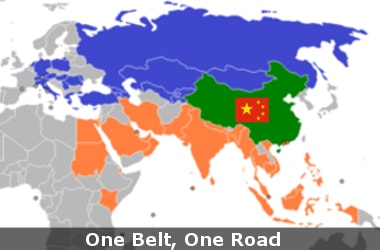
All you need to know about China’s One Belt One Road strategy
China’s Silk Road that connects it with Central Asia and Arab for free flow of trade dates back to the time of Zhang Qian, the imperial envoy of China before 2000 years. In 2013, China’s president Xi Jinping came up with the idea of something similar, one belt one road (OBOR). His aim is to develop a network of railways, roads, pipelines, and utility grids that would link China and Central Asia, West Asia, and parts of South Asia. Other advantages of the OBOR will be economic collaborations, policy management, trade and financing partnerships, etc. among others.
The proposed planThe OBOR is proposed to have two components - the Silk Road Economic Belt and the 21st Century Maritime Silk Road. The Silk Road Economic Belt is sought as three routes connecting China to Europe (via Central Asia), the Persian Gulf, the Mediterranean (through West Asia), and the Indian Ocean (via South Asia). The 21st Century Maritime Silk Road is sought to connect regional waters.
The plan is seen as something that will lead to the development of six major economic corridors, which includes the New Eurasian Land Bridge, China–Mongolia–Russia, China–Central Asia–Western Asia, Indo-China Peninsula, China–Pakistan, and Bangladesh–China–India–Myanmar.
Cited objectives- Enhancing policy coordination across the Asian continent
- Trade liberalisation
- Financial integration
- Connectivity including people to people links
The plan in actionMore than 60 countries have expressed interest in OBOR. China has already signed bilateral cooperation agreements of the project with Hungary, Mongolia, Russia, Tajikistan, and Turkey. Some of the projects are already under way, including a train connection between eastern China and Iran that is meant to be expanded to Europe. Also under development is a new rail links with Laos and Thailand and high-speed-rail projects in Indonesia. China’s Ningbo Shipping Exchange is also collaborating with the Baltic Exchange on a container index of rates between China and the Middle East, the Mediterranean, and Europe. It is also notable that about 200 enterprises have signed cooperation agreements for projects along OBOR’s routes. China already raised a $40 Billion fund for OBOR.
India’s stand in OBORChina is still awaiting India’s clear response in support of OBOR which we decided to take our own sweet time and why not when it is China and Pakistan’s BFF status that is going to affect the project’s priorities.
The first reason why India does not want to endorse the project is that China decided to make the China Pakistan Economic Corridor (CPEC) a flagship OBOR project. This is definitely not something that was made clear in the beginning of the proposal in 2013 and neither did they consult India before deciding upon the CPEC project with Pakistan.
The second reason is that CPEC passes through Pakistan-occupied Kashmir (PoK) and Beijing could have clearly avoided CPEC as a key route of OBOR, when there was the alternative of taking it forward on a parallel basis. The strategic intentions of China behind OBOR remain unclear to India and hence we should be wary and take the time needed before jumping into the proposal.
Should India join OBOR?Some have been suggesting that we rather be the silent observer because of Chinese ties with Pakistan and the violated CPEC project while the others believe that at a time like this when China is at the verge of becoming a world power, it will be isolating for India to stay behind. The trade flow is also likely to benefit us. However, serious talks regarding CPEC and the unclear proposals of the OBOR needs to be discussed initially.